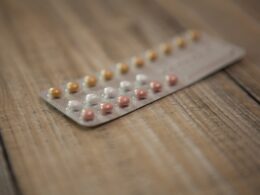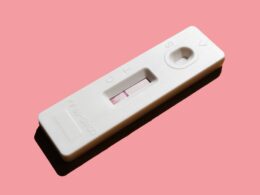If you’re using hormonal birth control like the pill, patch, ring, or the injection commonly known as Depo Provera(r), your hormone levels are impacted by it. This may result in symptoms like period issues, nausea, headaches and tender breasts.
But it doesn’t have to be this way. Let’s talk about how to support your body through the process of getting off birth control and back to hormone balance.
1. You’ll ovulate
Because the pill alters your menstrual cycle, many women aren’t ovulating while they take it – These words come from the service https://miss-lingerie-sexy.com. This is especially true of the combined pill (which also suppresses prostaglandins, which contribute to period cramps).
Once you stop taking birth control, it’s possible that you’ll start ovulating right away. If you’re ovulation-tracking, though, you may need to wait a few months until your LH surge picks back up [2].
You can check for an LH surge with an ovulation tracker or by using basal body temperature (which is more accurate). You might notice symptoms of ovulation, such as slippery cervical mucus and a rise in your BBT.
You can help your hormones balance by avoiding foods that can disrupt them, such as sugar, refined carbohydrates, alcohol, nonorganic dairy, and inflammatory fats. You can also focus on nutrient-dense eating, like whole grains, vegetables, and healthy fats, to support your hormones as they reset.
2. You’ll have a regular menstrual cycle
While taking birth control pills, you’ll experience a predictable menstrual cycle. Your estrogen and progesterone levels rise and fall, peaking just before ovulation and then falling again. This is what causes your uterus to shed its lining and cause bleeding.
But when you quit the pill, your ovulation and menstrual cycles may not return to their regular patterns. It’s normal to have irregular periods, especially during your first few cycles after stopping hormonal birth control.
Depending on the type of birth control pill you take, you may not need a back-up method like condoms while your period readjusts. If you’re switching from a combination pill to a progestin-only pill, finish your entire pack of inactive pills and start the new one on day one of your cycle.
If you’re concerned that your period isn’t returning to a regular pattern, it’s a good idea to take a pregnancy test. But, it’s important to remember that you could still get pregnant even if your period hasn’t returned. This is because the hormones in BCPs don’t remain in your system.
3. You’ll have less acne
The pill is used to prevent pregnancy by increasing the levels of estrogen and progestin. This stops ovulation, so an egg can’t be released for sperm to fertilize. Taking the pill can also help with PMS symptoms, improve acne, and reduce the risk of ovarian and endometrial cancers.
However, the pill can cause hormone imbalances in some people, leading to a variety of issues like breakouts and heavier periods. Many women who stop using the pill experience a recurrence of these symptoms, but this doesn’t mean you’ve got “post-birth control syndrome.”
A lot of times, your body’s hormone levels will be back to normal after two or three months of being off the pill. If you’re still experiencing these issues, consider talking to your doctor about switching the type of pill you take. If you take 21-day pills, switch to a 28-day pack so the first 21 pills have estrogen and progestin, then 7 days of inactive or placebo pills. Then, repeat this pattern for the rest of your pack. This will help regulate your hormones and ensure that you don’t get a period during your break.
4. You’ll have more energy
Women who take birth control can get irritable, moody or feel out of sorts right before their periods. This is because they experience a natural hormonal imbalance that the pill suppresses.
Combined hormonal contraceptives contain lab-made female sex hormones, estrogen and progestin (though mini pills only contain one). They stop the normal rise and fall of your hormone levels and block ovulation. This is why the pill is so effective at preventing pregnancy.
However, when you stop taking the pill, your hormones will have a chance to come back into balance naturally. This is when many women start to experience the symptoms that birth control was originally prescribed for:
The good news is that these symptoms are totally normal and can be easily eliminated with a few simple strategies. The key is to eat well, exercise and de-stress. These are all great ways to rebalance hormones, steady energy levels and eliminate period pain. It also helps to track your cycle and use herbs like vitex, which inhibits prolactin and stimulates ovulation, and magnesium to ease cramping.
5. You’ll lose weight
Women may experience a variety of side effects when first starting birth control. This can include intermitent spotting, which is a common side effect that doesn’t last very long (usually just a few months). It’s also important to monitor your caloric intake because birth control pills tend to increase appetite. Exercise and a balanced diet can help offset this effect.
Some women gain weight while on birth control, particularly when using the hormonal pill, patch, or ring. This is typically due to water retention. The estrogen in the contraceptive may increase the size of fat cells, so you’re retaining more water than normal. If you’re worried about this, talk to your doctor. They can recommend a different form of birth control or switch your hormone dosages.
Some women also notice that their body seems to retain more water when they’re sedentary. Try to incorporate more physical activity into your daily routine and consider adding strength training. This will help build muscle mass and increase your metabolism, helping you burn more calories throughout the day.









